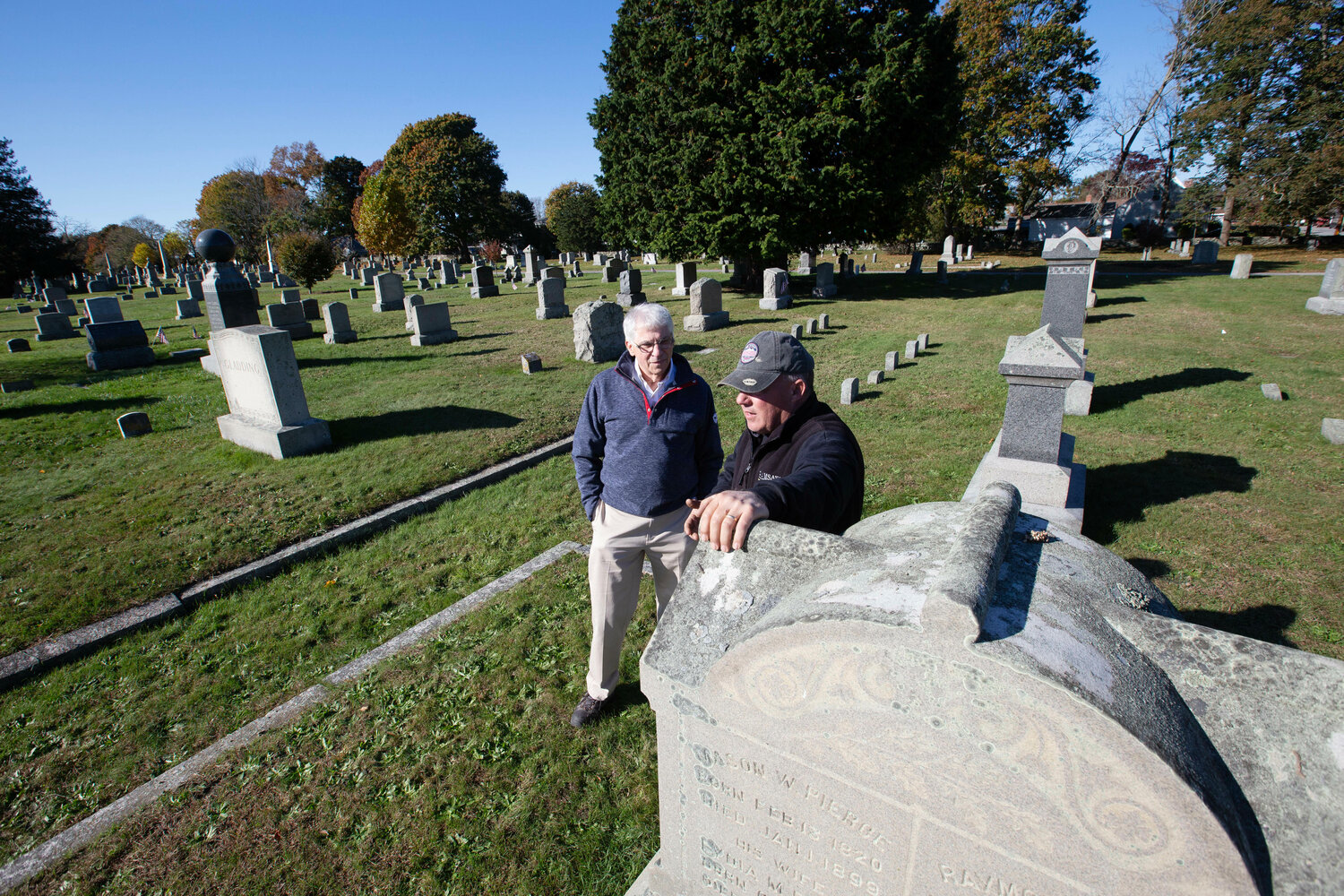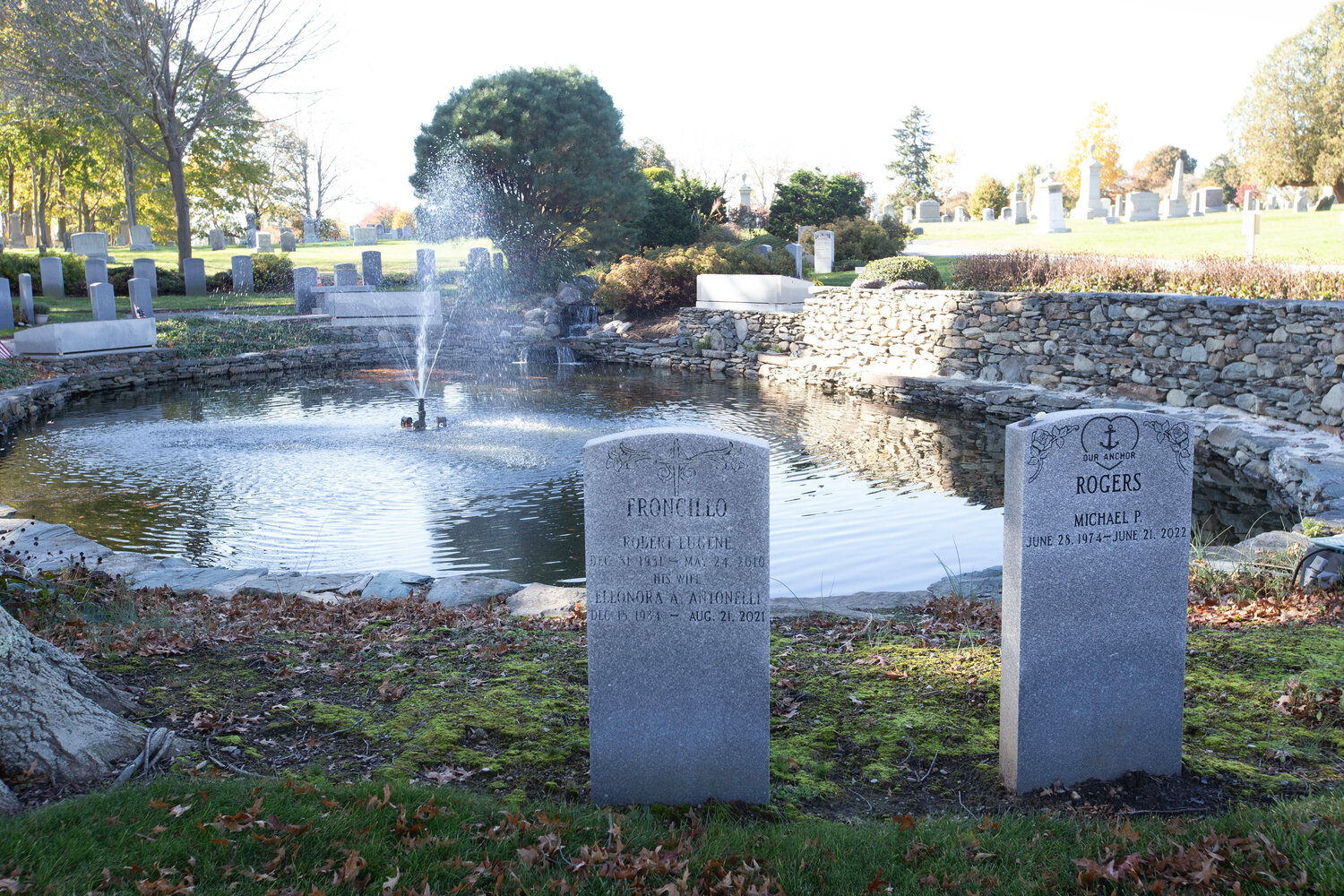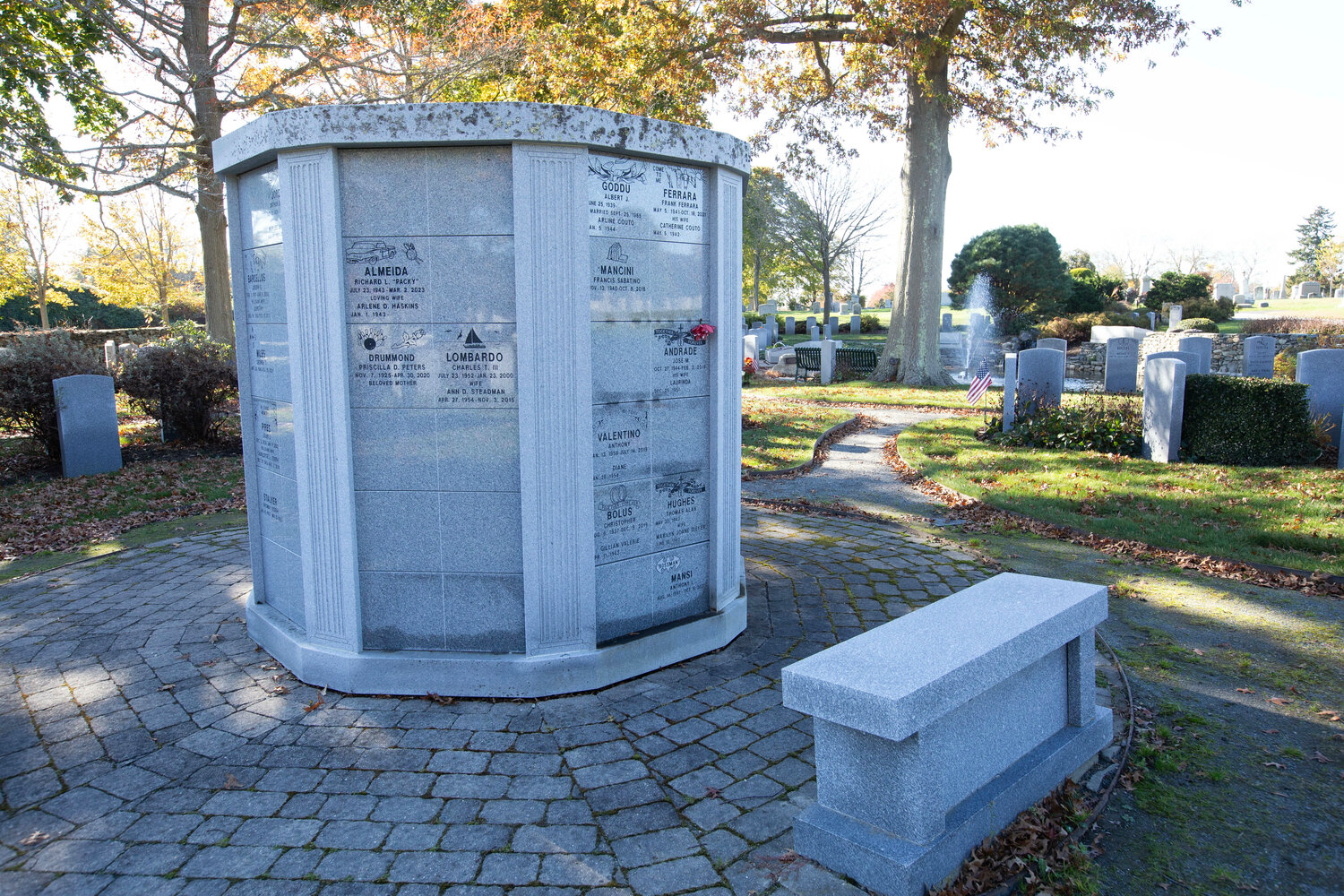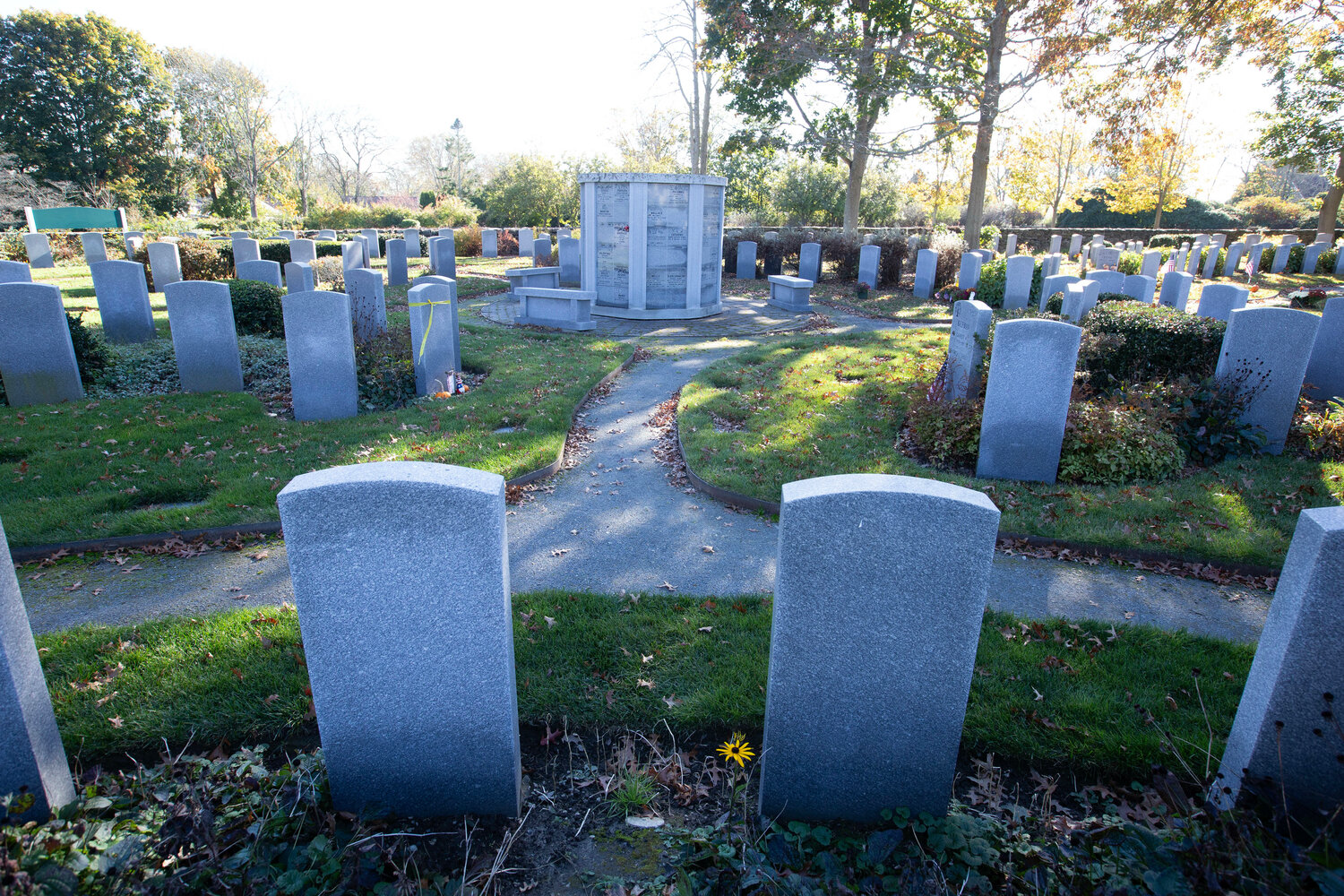Do Bristol's cemeteries have enough room for the future?
No matter what side of the turf you are talking about, real estate in Bristol is at a premium.
This item is available in full to subscribers.
Please log in to continue |
Register to post eventsIf you'd like to post an event to our calendar, you can create a free account by clicking here. Note that free accounts do not have access to our subscriber-only content. |
Day pass subscribers
Are you a day pass subscriber who needs to log in? Click here to continue.
Do Bristol's cemeteries have enough room for the future?
No matter what side of the turf you are talking about, real estate in Bristol is at a premium.
There are officially 11 cemeteries in town according to the RI Historic cemeteries website (rihistoriccemeteries.org). Most of these are private family or church lots, but three — Juniper Hill on Sherry Ave., St. Mary’s on Chestnut St., and the North Burial Ground on Hope Street — are open to the public.
To the casual observer, all three of these cemeteries look pretty full — but looks can be deceiving. According to Chris Fletcher of Juniper Hill, the land visible from the main loop road that meanders through the parklike property, incorporated in 1856, is only about a third of the space.
“The whole cemetery was laid out from the beginning but some sites were let go,” Fletcher said. “It’s tight in terms of what is currently developed, but there is definitely room to grow.”
The North Burial Ground has room to grow, too. The cemetery owns five additional acres that wrap behind the Quinta Gamelin center all the way down to the bike path.
Only St. Mary’s would seem to be running low on acreage, but according to Deacon Paul Bisbano, there is enough space to meet the immediate need.
“I don’t see a problem for the next 5 to 10 years,” said Bisbano. “We will be looking to increase capacity in the future and we are starting to talk about it, but I think we are fine for now.”
Changing trends preserve land
“Lots more people are going to cremation, which takes up less land,” said Bisbano. How much land? The cremation garden and columbarium at North Burial Ground has some 2,800 spaces in an area of land that would hold about 80 traditional burials.
“This cemetery is fortunate, we built this cremation garden about 14 years ago,” said Enzly Ramsay, Superintendent of Cemeteries for Bristol, who also oversees the North and East Burial Grounds. “It was ahead of its time. It was a piece of land that has a high water table, so we didn't want to use it for traditional burials, but with cremation, we don't need six foot of depth. We only need two feet of depth.”
“This has kept us from opening up our reserved space for at least four or five years.”
While nobody had hard numbers to share, all reported that the preference of cremation over burial happened in about the last 10 years, and it’s at roughly 60/40 today, with the majority preferring cremation. There are several reasons for this trend. For one, cremation is far less expensive than the costs associated with preparing a body for burial, buying a casket, and, if needed, shipping.
Ramsay said he is also finding that people are choosing cremation about 60% of the time, up from 80% preferring burials not that long ago. Fletcher noted that at Juniper Hill, they were doing about 90% full burials as recently as 10 to 15 years ago. Tradition does hold strong, especially for the older members of the community. The Catholic Church also had a huge impact.
“They approved cremation back in 1977,” said Ramsay. “But it took about 40 years for it to really be accepted by all clergy and communities. Once they did, the floodgates opened up.”
“We do have a very traditional community here,” agreed Cavalconte.
A living space
Cemeteries are places to go to remember and honor those who have gone before us, but they are also great open spaces for (respectful) recreation.
“Cemeteries actually predate the park system,” said Ramsay. “Before there was a Central Park, people used to go out to the cemetery on holidays and beautify their family plot — that started the park movement.”
It was typical for a family to go to the cemetery to remember and spend time enjoying the outdoors, and have a picnic. These days, a lot of communities don’t have much open space beyond their cemeteries.
“This is a sacred space to come and honor the dead,” said Cavalconte of the the North Burial Ground. “It’s also a great place to walk. It's quiet, it’s safe.”
Cavalconte and Ramsay are focused on making the North Burial Ground even more parklike; they have also planted about 130 specimen trees in the past decade. Many of these have been marked with identifying plaques, thanks to the volunteer efforts of local tree expert Bill Chittick.
The North Burial Ground is the only active cemetery that is technically owned by the Town of Bristol, but it is financially self-sufficient and totally separate financially from the town. All income goes into the perpetual care fund that is used to maintain both the North and East Burial Grounds, and occasionally, make repairs to stones and deal with other exceptional maintenance issues.
“It functions as a small business,” said Ramsay. “Its goals are a little bit different than your average business. We bow to the perpetual care fund. The better we can make it, the better the cemetery will be in the future.”
The cemetery that isn’t
There is one piece of open space that is not officially listed as a cemetery but is the site of some of the oldest burials in town, though not a single historic stone to speak of.
That’s the Town Common.
Many people have heard that when Wood Street was laid out, the Town moved stones, though not caskets, to make way. Some of those old stones, dating to the 17th and 18th centuries, ended up in the East Burial Ground, while others were relocated to the North Burial Ground and Juniper Hill. If the families were still around, they were invited to come and collect the stones and relocate them as they saw fit.
In fact, Cavalconte and Ramsay think most of the stones in East Burial Ground are not associated with a burial on that site. The rock ledge that lays under most of that land is clearly visible in places. In the course of regular maintenance, Ramsay’s company has found subsidence consistent with pre-20th century burials, but not much.
“I believe that there are people over there,” he said. “But if it's more than five percent of the stones I'd be surprised.”
According to Cavalconte, when they decided to clear the Town Common of graves, the wisdom was that you did not disturb the actual burials. “I was told there used to be a smallpox hospital right about where the basketball court used to be,” he said. “And if you didn’t walk out the front you were buried out the back.”
“They thought clearing the graves would reignite the smallpox.”
And it’s not just under the basketball court — the tennis/pickleball court area used to be the west side of the East Burial Ground — without the rock ledge.
There is a way to determine if there are ancient burials at a site, and it is pretty disruptive. The Bristol Statehouse Foundation undertook just such an effort a number of years ago in hopes of adding an elevator to the back of the building.
“You scrape off the first 16-20 inches of soil and then you just sit back and wait,” said Ramsay. “The undisturbed ground dries fairly quickly but the grave shafts do not. They (graves) literally laid themselves out.” The results of that process allowed the contractor to determine where to lay the footing to avoid disturbing the gravesites.
“You straddle the incredible history of the Town,” said Cavalconte of his and Ramsay’s roles as Commissioner and Superintendent of Cemeteries. “And at the same time you work with the families who are grieving and trying to make decisions about the future. It’s a really unique view.”













